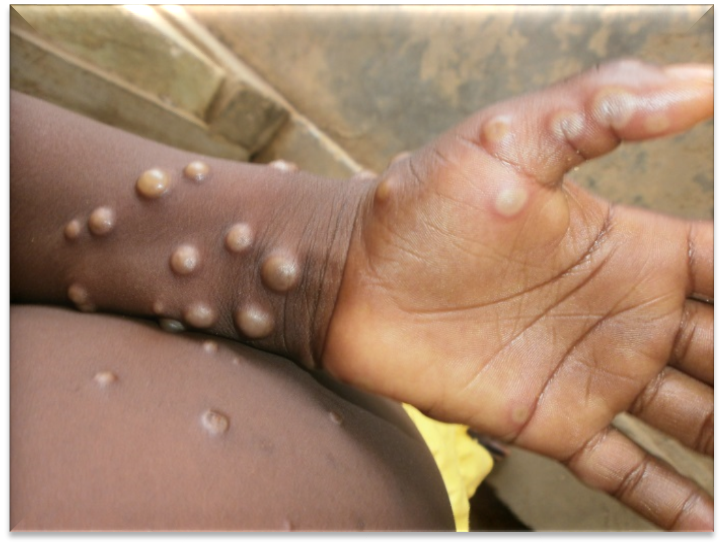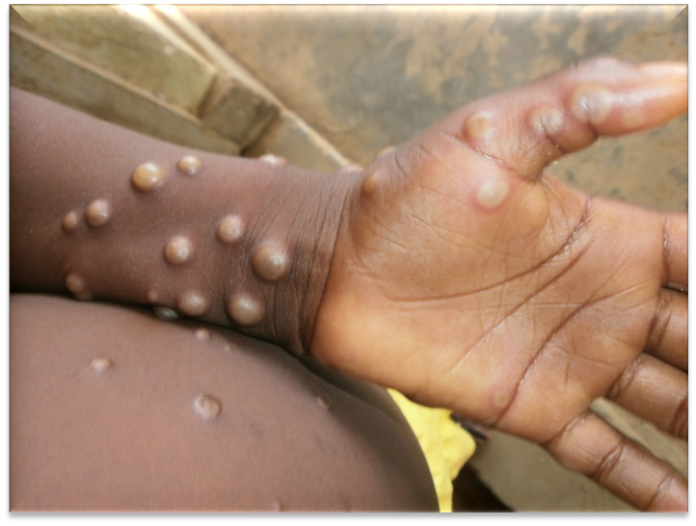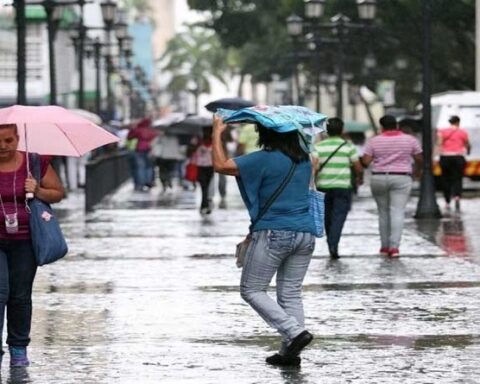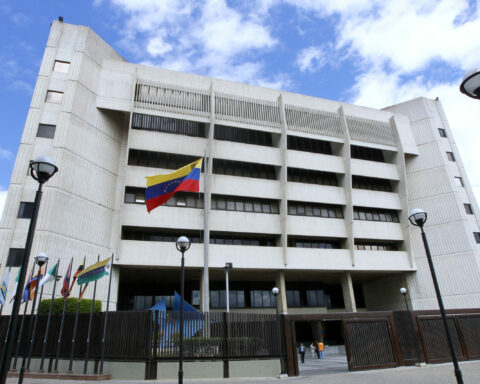In recent days, the United Kingdom Health Security Agency (UKHSA) has confirmed that six people in London and one in the northeast of England have been diagnosed with monkeypox. It is a rare, emerging, life-threatening zoonotic infection that can spread to humans, usually occurring in West and Central Africa, where it is now endemic. All patients in England who need medical care are in specialist infectious disease units. Fortunately, the individuals have the West African clade of the virus, which is mild compared to the Central African clade.
The disease was discovered in 1958, when two outbreaks of a smallpox-like illness occurred in colonies of monkeys kept for research purposes. For this reason it received the name “monkeypox” or “monkeypox”.
The first human case of monkeypox was reported in August 1970 in Bokenda, a remote village in the equatorial province of the Democratic Republic of the Congo. The infected was a 9-month-old boy who was admitted to Basankusu Hospital with suspicion of having contracted smallpox. A sample, sent to the WHO Smallpox Reference Center in Moscow, revealed that the symptoms were caused by the monkeypox virus.
The patient’s family said they sometimes ate monkeys as a delicacy, although they could not remember if they had eaten monkeys in the last month or if the child had contact with a monkey before developing symptoms. The investigation showed that the child was the only one in the family who had not been vaccinated against smallpox.
Smallpox has been eradicated, monkeypox has not.
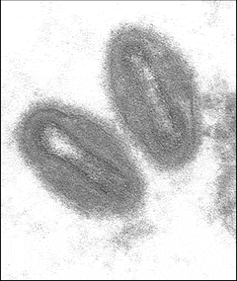
Wikimedia Commons / University of Wisconsin-La Crosse
Monkeypox is caused by the monkeypox virus, an orthopoxvirus similar to Variola virus (the causative agent of smallpox), cowpox virus, and vaccinia virus. Since the eradication of smallpox, monkeypox has assumed the role of the most prominent orthopoxvirus that affects human communities.
Of the cases confirmed these days by the United Kingdom Health Security Agency (UKHSA), the first with monkeypox in london it was announced on May 7. The patient had a recent travel history from Nigeria, which is where he is believed to have contracted the infection, before traveling to the UK. The following two cases announced on May 14 live together in the same household and are not linked to the first confirmed infected. The four new cases announced on May 16 have no known connections to previous confirmed cases.
Cases of monkeypox are common in Nigeria. In your last reportthe Nigerian Center for Disease Control (NCDC) said the country recorded 558 cases of monkeypox and eight deaths in 32 states of the federation and the Federal Capital Territory among the years 2017 and 2022.
Incubation and symptoms of the disease
In humans, the symptoms of monkeypox are similar to the symptoms of smallpox, although somewhat milder. They start with a fever, headache, muscle aches, back pain, chills, and exhaustion. The main difference between the symptoms of smallpox and monkeypox is that the latter causes the lymph nodes to swell (lymphadenopathy), while the former does not.
The incubation period for monkeypox is usually 7 to 14 days, but can be as short as 5 and as long as 21 days. It’s normal to develop a rash, which often starts on the face and then spreads to other parts of the body, particularly the hands and feet. Before long, the rash changes and goes through different stages before it crusts over and finally falls off.
The illness usually lasts 2 to 4 weeks. Transmission is thought to occur through saliva or respiratory excretions, or by contact with exudate from the lesion or crusting material. Viral excretion through faeces may also represent another source of exposure.
Available data suggest that African rodents act as a natural reservoir. The monkeypox virus is capable of infecting squirrels, rats, mice, monkeys, prairie dogs and of course humans.
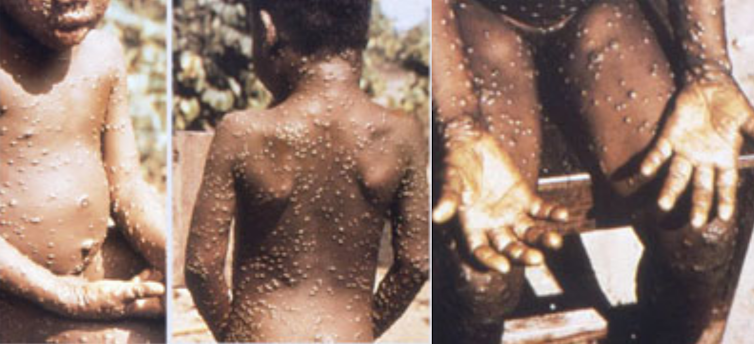
Wikimedia Commons / United States Centers for Disease Control and Prevention.
Resurgence in Africa
The African continent has been facing a resurgence of monkeypox in the last decade. More confirmed cases of monkeypox have been diagnosed since 2016 than in the previous 40 years.
To clarify the situation, four possibly simultaneous explanations are proposed for the increased incidence of monkeypox:
- The first is the cessation, in 1980, of vaccination against smallpox. and the consequent decreased immunity against orthopoxviruses.
- The second is the largest or most frequent exposure to animal species that act as reservoirs of the disease.
- The third is the increased rate of person-to-person transmission, particularly in hosts. immunocompromised.
- The fourth is the advance in diagnostic capacity and the development of health education programs.
At this time, there are no specific treatments available to combat monkeypox infection, but outbreaks of the disease can be controlled. Some data indicate that the smallpox vaccine is at least 85% effective in preventing monkeypox. Also the antivirals cidofovir and ST-246, as well as specific immunoglobulins, can be used to control an outbreak of monkeypox.
Beyond Africa: a global disease
In Africa, the fatality rate ranges from 4% to 22%. Most of the patients are children. In addition, the disease is also a global health security concern, as the 2003 outbreak in the United States demonstrated. Researchers determined that a shipment of animals from Ghana, imported into Texas in April 2003, introduced the smallpox virus simian in the United States.
The shipment contained approximately 800 small mammals representing nine different species, including six types of rodents. Laboratory tests from the Centers for Disease Control and Prevention (CDC) showed that two African giant rats, nine dormouse and three squirrels were infected with the monkeypox virus.
After importation into the United States, some of the infected animals were housed near prairie dogs at an Illinois animal dealer’s facility. These prairie dogs were sold as pets before they developed signs of infection. 72 people became ill with monkeypox, all after contact with the infected prairie dogs.
Undoubtedly, it is pertinent to monitor the appearance of new cases or outbreaks of monkeypox as well as take appropriate preventive measures, because the disease constitutes a significant threat to human health.
Raul Rivas GonzalezProfessor of Microbiology, University of Salamanca
This article was originally published on The Conversation. read the original.

